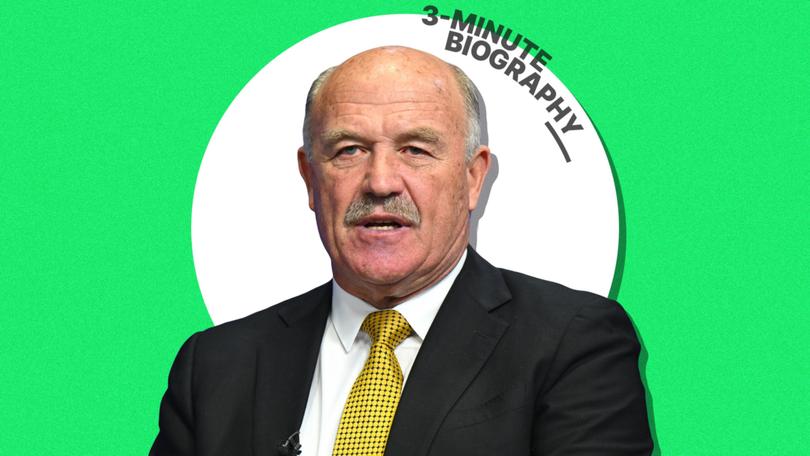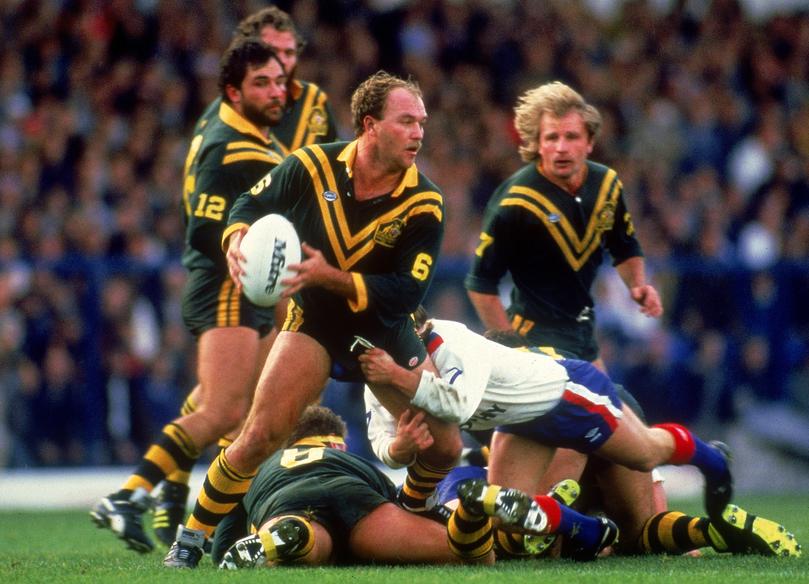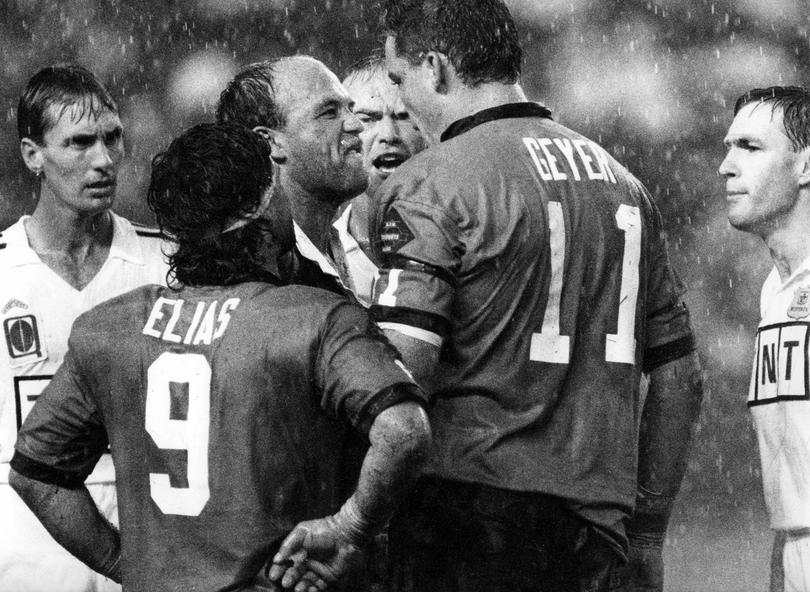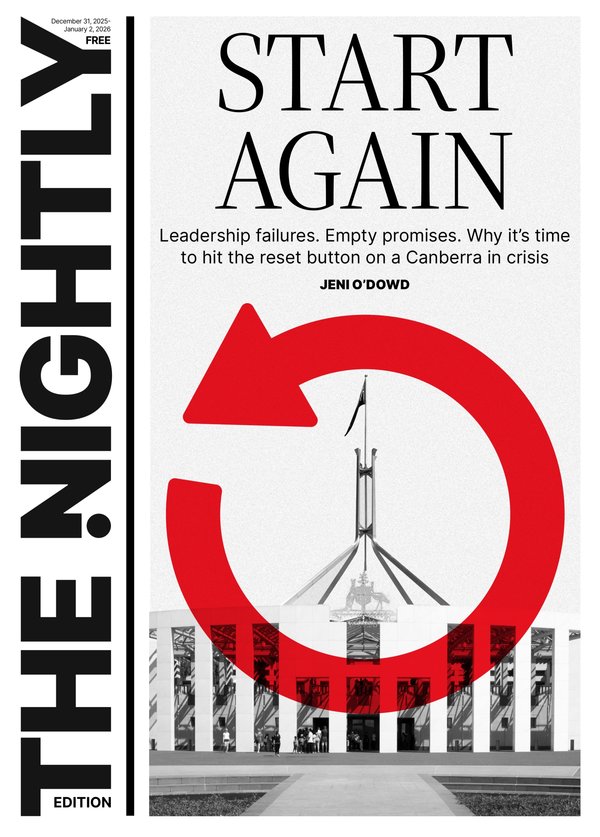THREE-MINUTE BIOGRAPHY: Wally Lewis, ‘The King’ who ruled over rugby league

Every sport has them.
You know, the people who become more than just players. Even the tag “great” fails to cover it. They become the game itself.
At the peak of his powers, Wally Lewis was one of them.
Sign up to The Nightly's newsletters.
Get the first look at the digital newspaper, curated daily stories and breaking headlines delivered to your inbox.
By continuing you agree to our Terms and Privacy Policy.In the early years of rugby league State of Origin, when NSW and Queensland virtually went to war, Lewis became synonymous with those epic encounters.
Dubbed The King, his reign stretched across one of the game’s most memorable eras as he became the ultimate State of Origin warrior.
After he hung up his boots, a bronze statue was erected at his battlefield, Lang Park, and Lewis was dubbed a rugby league “immortal” in 1999.
Lewis was born in December 1959, in Brisbane into a working-class and rugby-mad family.
In his autobiography, My Life, Lewis wrote that he had worked hard at achieving his dream.
An article about the book by Lucy Carne in the Brisbane Courier Mail in 2020 said that Lewis grew up in a humble house in Cannon Hill.
Money was tight and often the Lewis kids would walk to school barefoot.
The backyard was the scene of spirited football games with the neighbourhood kids.
Lewis spent hours hurling the ball at the wooden back wall of the home — so much so that it stripped away some of the paint, Carne wrote.
“To say I was obsessed with rugby league from a young age would be the classic understatement,” Lewis wrote.
“I spent hours and hours passing and kicking to an imaginary target on this back wall . . . much to the delight of my mother, whose kitchen backed onto the wall. It’s a wonder it’s still standing.”
“If you want to get good at something, practise, practise, practise and then practise some more.”
It made for perfect.
The Sport Australia Hall of Fame says the Lewis reputation began to emerge when he was a member of the Australian schoolboys rugby union side that toured Europe, Britain and Japan undefeated in 1977/78.

In April 1978 Lewis made his first grade league debut for Valleys.
He made his debut for Queensland in 1979 against NSW.
And after he was selected in 1980 for the inaugural State of Origin match it was not long before the legend was born.
The National Rugby League Hall of Fame says he went on to make 30 appearances as five-eighth and captain between 1981 and 1991, winning eight man-of-the-match awards.
Lewis made his Test debut in 1981, against France, the only Queensland-based player in the side and was unchallenged as Australian captain from 1984 to 1989.
To watch a clip of Lewis at his best is to witness powerful running as he shrugged off opponents; bone-crunching tackles; bullet passes to teammates to set up attacking phases or tries, and precision kicking.
The Sport Australia Hall of Fame says Lewis’ long passing game “sent tacticians scurrying to devise a means to defend against this new weapon.”
In a Test against Great Britain, “Lewis threw the ball 30m across the field to hit a rampaging Mal Meninga on the chest who crashed over to score a try.”
“Even his teammates shook their heads in disbelief at what they had witnessed. In one play Lewis had forever changed the way rugby league was to be played.”

In short, he was the complete player and notched 441 first-class games for 197 tries and 854 points.
After his retirement, a bronze statue was erected at Lang Park, and in 1999 he was named an ‘‘Immortal’‘.
In 1987 Lewis was made a Member of the Order of Australia and made a Sport Australia Legend of Australian Sport in 2016.
But his complete dedication came with complete complications.
By the age of 19, the repeated head knocks were becoming a concern, Carne wrote, and his worried mother would sometimes watch over him as he slept.
In 1980, at the age of 20, he had his first seizure.
“Lewis kept his epilepsy diagnosis secret from 1987,” Carne wrote. But in 2006 Lewis had a seizure on air while presenting an evening TV sports segment.
Last year Lewis said he was shocked by brain scans that brought a diagnosis of probable chronic traumatic encephalopathy from repeated head injuries.
CTE has been associated with memory and thinking problems, confusion, erratic behaviour, aggression and depression.
This week Lewis told the National Press Club his life had been changed by brain trauma.
“I am living with the constant fear and anxiety that I’ll let people down,” he said. “This is my reality and the reality for all those living with dementia. One thing we do know is that CTE is the only form of dementia that is preventable, and we only get one brain.”
He called for government investment in support services and education about CTE.
Lewis is frozen in time by iconic photographs in which he is being chaired from the field by teammates, and in which his maroon Queensland jersey has been turned black from battle in the mud.
And even this immortal’s mortality is all too clear.

